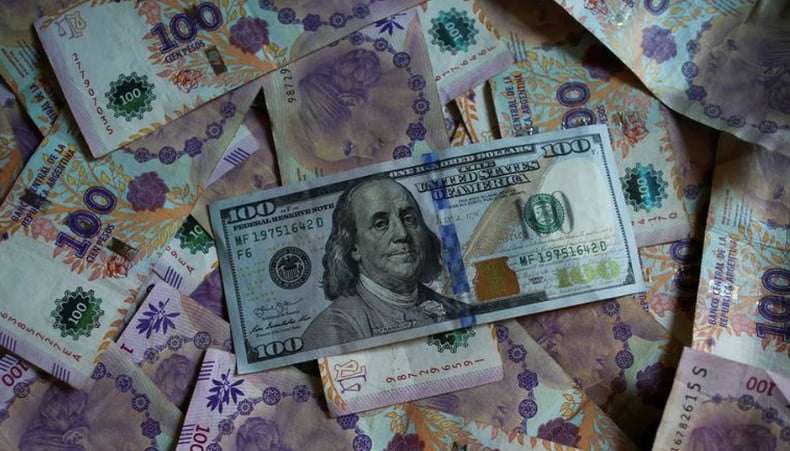
The devaluation of the Argentine currency continues
The currency amounted to 20 pesos, to a new nominal maximum. In July it climbs 99 pesos or 41.6%.
The free dollar ended agreed to $337 for sale, with an increase of 20 pesos or 6.3% on the day. The currency, which reached a record of $338, scores an increase of 99 pesos or 41.6% so far in July.
The wholesale dollar earned 20 cents, at 129.58 pesos. The exchange gap between the two rates reached 160.1%, above the previous peak of 149.6% on 23 October 2020.
They also rose sharply the exchange rates, that is, the «counted with liquidation», to $334.16, and the MEP dollar, to $322.49, which are obtained from the trading of bonds and shares that are quoted simultaneously in pesos and dollars. The «counted with liqui» played a maximum of $341 at noon.
Meanwhile, the trading of the dollar through the reference bonds offered lower implicit quotations, although traders pointed out that in the last sessions the participation of public bodies in the secondary market was noticed, to mitigate the uptrend. Thus, the «counted with settlement» through the Global 30 bond (GD30C) closed at $329.82, while the MEP dollar with the Bonar 30 (AL30D) ended at 321.57 pesos.
«Investors still do not trust the measures announced days ago by the new Minister of Economy, Silvina Batakis, which fail to reassure the markets», commented analysts of Research for Traders.
The Government will allow foreign tourists to exchange their currencies at the price of the financial dollar to push their dollars into the formal market and discourage the blue market. In addition, it determined that it will relax some payments of imports of inputs and goods that the private sector claimed as priorities to continue its production. This was decided this morning by the Minister of Economy and the rest of the economic team that met at the Palace of Finance.
«When you talk about currency splitting, today they refer to an official dollar’ for tourists. The normal functioning of a country’s economy demands dollars. In Argentina, dollars enter the export sector, but they leave to pay for energy. What we see is that the exchange gap is very high -the difference between the official dollar and the free dollar-: it is around 160%, and it presses for devaluation expectations,» said Paula Gándara, CIO of Adcap Asset Management.
«The strong and everyday news is still the dollar that seems to have no brake. Faced with an uncertain economic roadmap, the increased reaction to divest from the local currency and seek hedging continues to convulse at the unbound exchange rate, or specifically depreciating the peso against the US currency,» said Javier Rava, director of Rava Bursátil.
The Minister of Tourism, Matías Lammens, stated that the Government works on alternatives for tourists to enter the formal market dollars, without giving more details. «Argentina needs the dollars that tourists bring. Today, because of the exchange gap, many of those dollars do not enter the Central Bank,» he said.
The BCRA sold another USD 50 million in the market. So far in July, the monetary authority has maintained a negative net balance for its intervention in the exchange market of the order of 981 million dollars. So far in 2022, accumulated net purchases in the wholesale market for about USD 861 million, an amount that represents 11.5% of the net balance in favor obtained in the same period last year, which accumulated some USD 7.490 million as July 21, 2021.
A relevant data for the stock of reserves was the return of the trade deficit after 15 months. According to the INDEC, the trade balance registered a red of -USD 115 million in June. In total, trade reached USD 16,979 million, composed of 49.7% of exports and 50.3% of imports. This loss of the surplus was due to an increase of imports of +44.6% y-o-y, which reached a record for a single month of USD 8,547 million, while exports increased +20.3% y-o-y, to 8,432 million dollars.
SOURCE: INFOBAE.COM
